The travel industry was different almost two decades ago, when we solely relied on hotels and resorts for accommodation. This Airbnb referral program case study examines how a successful referral marketing strategy can drastically change the game.
Key Takeaways:
- Airbnb transformed the travel accommodation industry from a small startup to a global platform. The company now defines an entire category of travel experience.
- Their referral program played a critical role in this remarkable journey. The platform grew from 21,000 guest arrivals in 2009 to over 80 million in 2016.
- Their strategic approach to referrals created a scalable acquisition channel that turned customers into advocates. This generated sustainable growth at lower costs than traditional marketing.
The Airbnb team pioneered referral strategies that many companies now attempt to replicate. However, these innovations arose from specific challenges that threatened their very existence in their early days.
In this article, we’ll analyze how their evolution, mechanics, and technical implementation, drove not just enough to get them by, but results that astounded the world.
AirBnB Background and Challenges
In 2008, Airbnb launched with a revolutionary concept allowing people to rent homes to strangers.
Most potential customers felt deeply uncomfortable with this unprecedented arrangement, with safety concerns about staying in someone’s private home. Some worried the platform might enable human trafficking, while others had never previously heard of such services.
Airbnb faced a fundamental trust problem threatening their business model. But the solution was already there: the company recognized that positive reviews would help build credibility among potential customers.
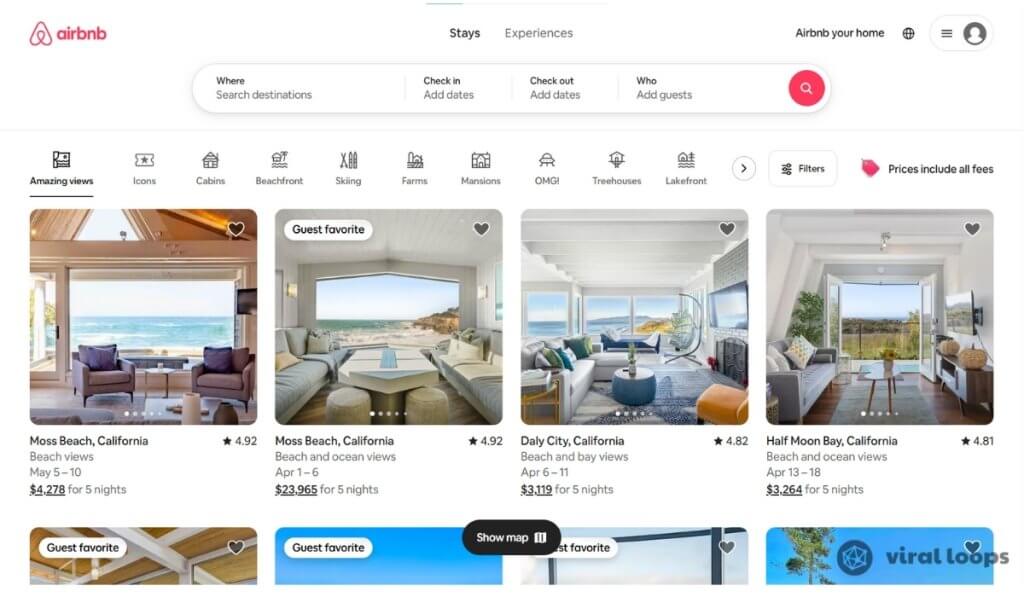
As such, Airbnb users with good experiences became their most convincing advocates, with word of mouth emerging as their most powerful growth engine. People trusted friends’ recommendations more than any advertising about accommodation safety.
However, organic word of mouth alone couldn’t deliver the rapid user growth needed. They required a systematic way to amplify personal recommendations.
Airbnb decided a structured referral program would provide the answer. Their first attempt in 2011 wasn’t properly promoted across their user base—many referrers simply didn’t know the referral system existed.
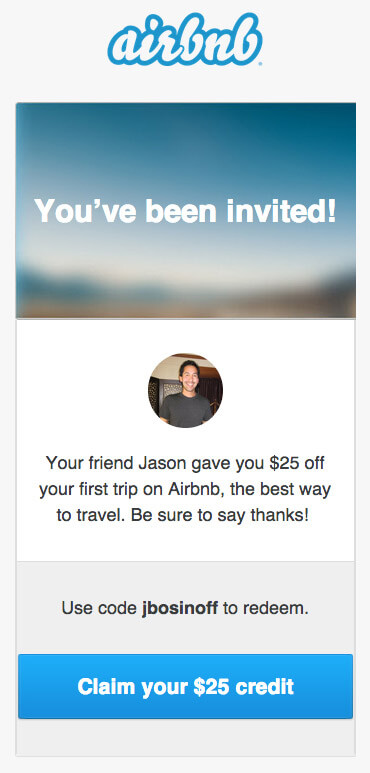
Despite minimal promotion, this early program generated millions in revenue, highlighting the untapped potential of referral marketing for would-be travelers. The Airbnb team realized they needed to develop their referrals product further into what would become one of the most successful referral programs in tech history.
Referral Program Evolution
After discovering the potential of their initial program, Airbnb decided to rebuild their referral program strategy. The first version revealed significant revenue opportunities despite minimal adoption. Their data showed tremendous potential for a properly designed referral system.
The Airbnb team assembled a dedicated group to focus exclusively on referrals. They identified poor promotion as the primary issue limiting program awareness—many existing users never encountered the referral option during normal platform usage.
The development of Referrals 2.0 began with a comprehensive study of user behavior. The team created a framework to measure success across the entire referral funnel, establishing key metrics including monthly active users sending invites and inviter conversion rate.
In 2014, Airbnb launched Referrals 2.0 with multi-platform accessibility across web, iOS, and Android. Unlike the first version targeting desktop users, version 2.0 prioritized mobile integration. The growth team built dedicated experiences for mobile apps, providing a huge competitive advantage in reaching potential customers.
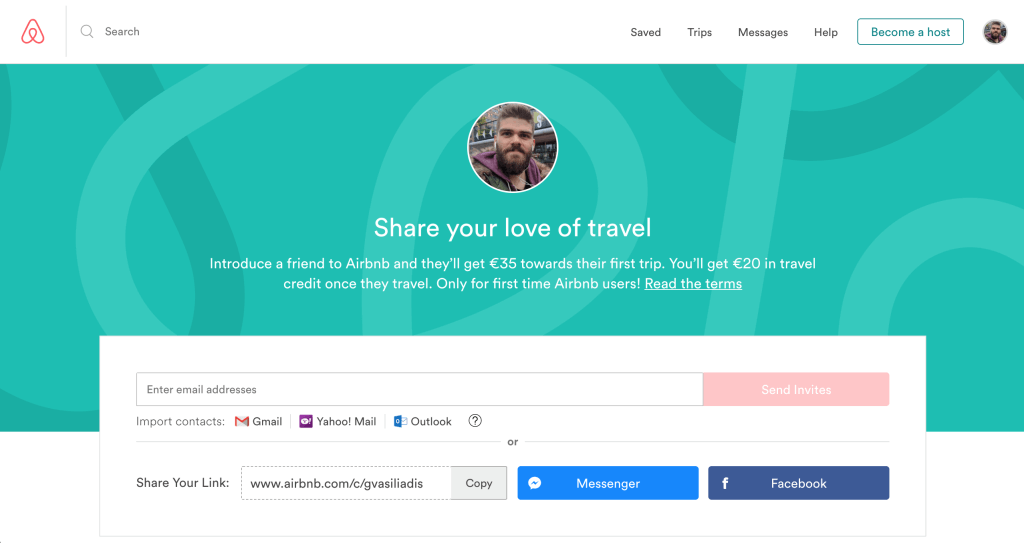
The redesigned program simplified the process with intuitive flows. Users could easily import contacts and generate personalized shareable links. Airbnb incorporated multiple entry points throughout the user journey, eliminating reliance on a single entry point.
The revamped referral program introduced a double-sided rewards structure where both parties received travel credits upon qualifying reservation completion. They differentiated rewards between guests and hosts—guests received travel credits for future bookings, while hosts received cash rewards to maximize engagement.
Want to learn more about how double-sided referral incentives work? Or interested in other types of incentives? Have a look at our guide on How to choose referral rewards and referral incentives.
AirBnB Program Mechanics and Incentives
Airbnb’s referral program succeeded through carefully designed mechanics and strategic incentives. The system balanced user experience, reward structure, and business sustainability. Understanding these elements reveals why the program drove such remarkable growth.
Invitation Flow and User Experience
The core mechanics centered around a simple yet powerful concept. Users could invite friends to join the platform through personalized referral links. Both parties received benefits when specific conditions were met through this double-sided referral program.

Airbnb’s invitation process started with prominent call-to-action buttons throughout the platform interface. Users could access the referral option from their account dashboard, after completing bookings, or via email prompts. This multi-touchpoint approach ensured maximum visibility across the user’s journey.
The referral process itself was designed for frictionless sharing across multiple channels. Users could send invitations via email, social media, or messaging apps with just a few clicks. The system also allowed users to import contacts directly from their email services for even faster sharing.
Conversion Experience for New Users
When a referred friend received an invitation, they encountered a personalized email and landing page.
This page featured the referrer’s profile photo and name to establish immediate trust through social proof. New users were more likely to sign up when seeing a familiar face recommending the service.
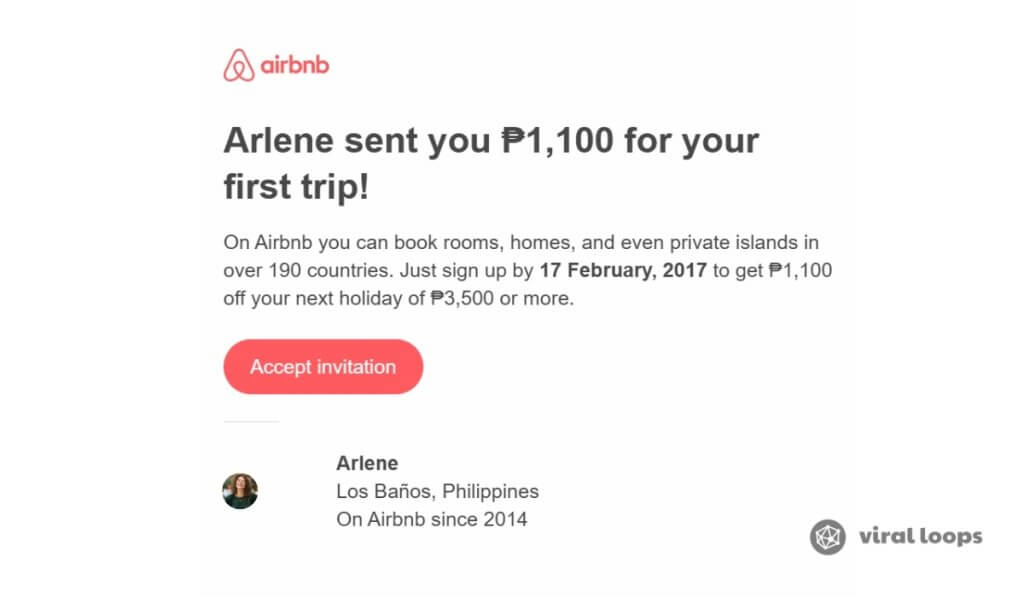
The email and landing page highlighted the available travel credits as an immediate benefit for joining. The design emphasized the gift aspect rather than the commercial nature of the platform. This approach leveraged the psychological power of reciprocity to boost conversion rates.
Reward Structure and Incentives
The reward structure offered travel credits worth $25 (or its equivalent to other currencies) to both the referrer and referred friend.
However, the referrer only received their reward after the friend completed a qualifying reservation. This requirement ensured the program generated actual booking revenue rather than just sign-ups.
A qualifying reservation required the referred friend to complete a stay as a guest. The friend needed to book and check out of an Airbnb property for the referral to count. This mechanism prevented fraud while ensuring genuine customer acquisition with host revenue impact potential.
For hosts, Airbnb offered a more substantial incentive of $75 when a referred friend listed their property. This differentiated reward structure recognized the higher value of acquiring new properties on the platform. Host acquisition directly expanded inventory, creating a virtuous growth cycle.
A qualifying reservation required the referred friend to complete a stay as a guest. This mechanism prevented fraud while ensuring genuine customer acquisition. Share on XProgram Limitations and Fraud Prevention
The program included several limitations to prevent abuse and maintain economic sustainability.
Airbnb capped the maximum number of referral credits users could earn at $5,000. Travel credits also expired after one year, encouraging timely use for future bookings.
Importantly, travel credits had no cash value and could only be used on the platform.
Referred friends could only use one referral code during signup to prevent gaming the system. The terms explicitly prohibited posting referral links on commercial websites or coupon aggregators.
Measurement and Optimization Framework
Airbnb’s referral system included robust tracking to measure success at every stage.
They monitored new user conversion rate, guest conversion rate, and user conversion rate across all channels. This data allowed continuous optimization based on real performance metrics.
The program tracked not just referral volumes but quality indicators of referred customers.
Referrals were analyzed for booking frequency, value, and likelihood to become referrers themselves. These insights helped refine targeting and reward structures over time.
Technical Implementation of AirBnB
The technical infrastructure behind Airbnb’s referral program represented significant engineering investment and innovation. The development required months of dedicated work. This foundation enabled seamless experiences across platforms while providing comprehensive tracking capabilities.
Cross-Platform Development Strategy
Airbnb’s growth team built the referral program simultaneously for web, iOS, and Android platforms.
This multi-platform approach required coordination across different codebases and user interfaces. The team became the largest outside contributor to Airbnb’s mobile apps during this period.
Engineers faced unique challenges in creating consistent experiences across different environments. Mobile platforms restricted certain functions that worked easily on web browsers. The team developed creative workarounds to maintain functionality across all touchpoints.
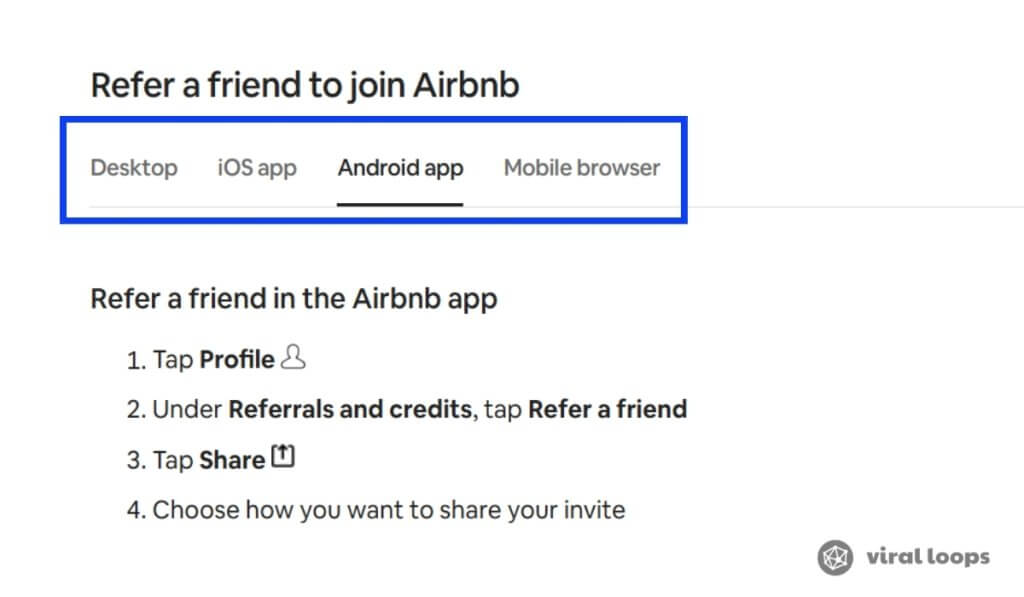
The technical architecture supported deep linking between platforms for a cohesive user journey. A user could receive a referral link on mobile and complete the process seamlessly on desktop. This cross-platform fluidity removed friction that might have otherwise reduced completion rates.
Contact Integration and Privacy Considerations
One of the most complex technical components involved integrating with external contact systems. The team built connections to Gmail and other email providers to import contacts. This feature dramatically simplified the invitation process for users.
The contacts API integration required careful handling of privacy permissions and data protection. Airbnb requested broader access permissions than most services typically did at that time. This approach risked lower acceptance rates but provided more relevant contact recommendations.
Engineers developed algorithms to identify and suggest contacts most likely to appreciate Airbnb invitations.
The system analyzed factors like travel frequency and relationship closeness when available. This targeting improved conversion rates compared to random contact selection.
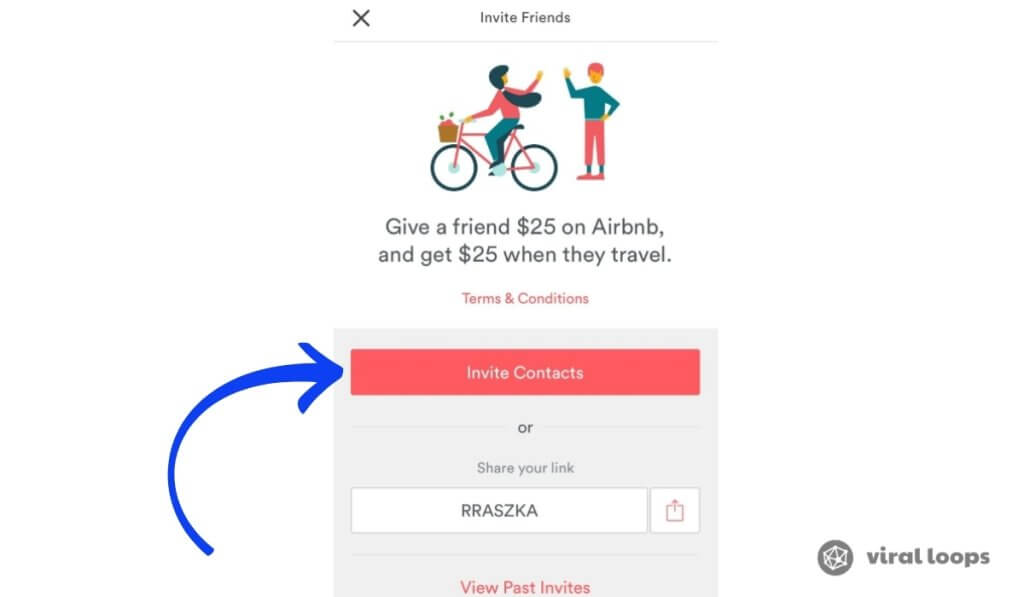
Mobile-Specific Optimizations
Mobile implementations required specialized solutions for attribution tracking across different app environments.
The team used fingerprinting technology from Yozio to connect web clicks with app installations. This solved the attribution flow challenge when users transitioned through app stores.
On Android, the team leveraged the contacts API to highlight frequently contacted people. This subtle optimization improved the relevance of suggested contacts on the platform. iOS required different approaches due to its more restrictive permissions model.
Page loading speed received particular attention on mobile implementations of the referral flow. The team implemented pagination and batched loading of contacts to maintain snappy performance. Slow-loading screens would have significantly reduced completion rates for referral attempts.
Testing Infrastructure and Iteration
Airbnb built robust A/B testing capabilities directly into the referral system. Every element from email subject lines to button placement could be systematically tested. This infrastructure allowed rapid iteration based on real user behavior.
One famous test compared messages emphasizing “giving” versus “receiving” travel credits.
Surprisingly, the altruistic framing that emphasized giving $25 to friends performed better. This insight influenced all subsequent messaging across the referral program.
The testing infrastructure connected directly to Airbnb’s analytics system for comprehensive performance tracking. Each test variant linked to conversion metrics throughout the entire referral and booking funnel. This data-driven approach enabled continuous optimization over time.
AirBnB Revamped Referral Program Results and Impact
Airbnb’s referral program delivered exceptional results that justified the substantial investment in its development.
The impact extended beyond simple user acquisition to affect core business metrics. The data revealed insights about referred users that would shape future growth strategies.
Growth Acceleration and Performance Metrics
Referrals 2.0 drove a remarkable 300% increase in bookings and signups compared to the previous version.
This dramatic improvement stemmed from both higher invitation rates and better conversion throughout the funnel. The program became one of Airbnb’s most efficient user acquisition channels by cost metrics.
Monthly active subscribers sending invites increased substantially after the redesigned interface launched. Inviter conversion rate consistently improved as the team optimized entry points and messaging. New user conversion rate from referral invitations outperformed all other acquisition channels.
The program’s impact varied significantly across different global markets.
In emerging markets where Airbnb lacked brand recognition, referrals generated up to 30% of first-time bookings. This performance made the program particularly valuable for international expansion efforts.
Here’s how the company grew over time:
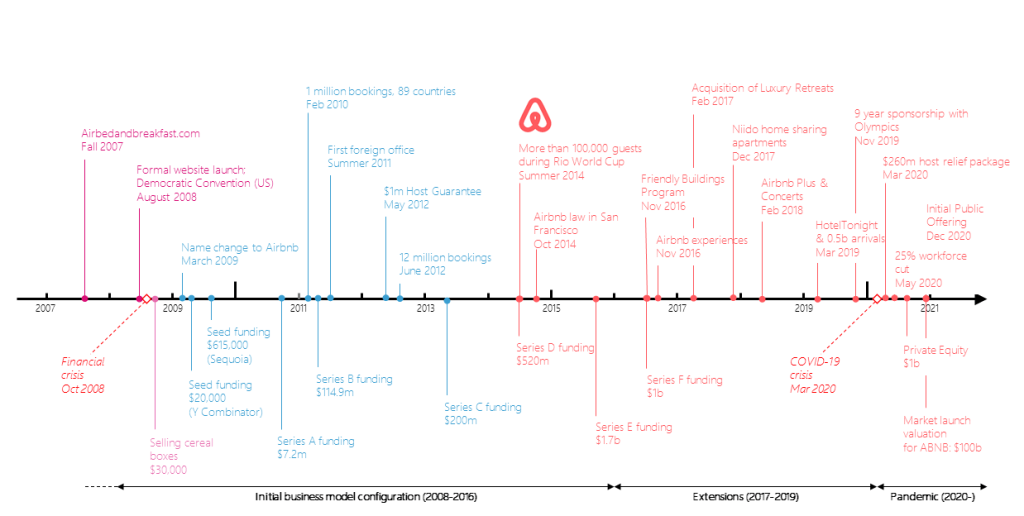
Quality of Referred Users
Analysis revealed that referred users performed substantially better than users acquired through other channels.
They booked more frequently and spent more per booking than their non-referred counterparts. These users also showed higher retention rates over their first year on the platform.
The guest conversion rate for referred users exceeded organic users by a significant margin.
New customers who joined through referrals were more likely to complete their first booking. This higher conversion reduced the effective cost of acquisition for these users.
Perhaps most importantly, referred users were more likely to become referrers themselves (aptly called referral contagion nowadays).
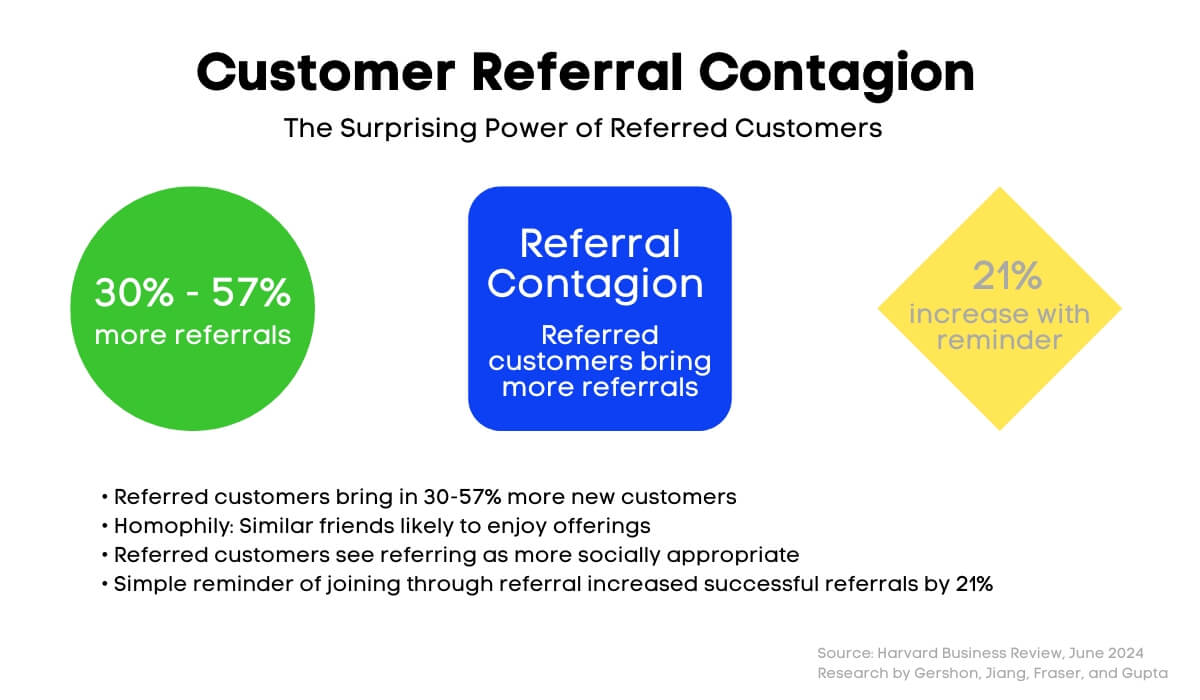
This created a powerful network effect where each successful referral potentially generated multiple additional users. The compounding growth potential made referrals increasingly valuable over time.
Financial Impact Assessment
The referral program’s direct revenue impact reached millions of dollars within its first year. This calculation included only immediate bookings attributable to referred users.
The lifetime value projections showed even more impressive returns on the initial development investment.
Each referred user generated higher host revenue impact potential than users from other channels. Their increased booking frequency and value created more revenue opportunities for hosts. This improved host economics strengthened the overall marketplace dynamics.
The program maintained favorable unit economics despite the cost of providing travel credits.
The cost per acquisition remained lower than paid marketing channels like search ads. The delayed reward structure, which only paid out after completed stays, ensured positive returns.
AirBnB’s current standing speak volumes:

Unexpected Benefits and Edge Cases
The program occasionally produced viral growth spikes from unexpected sources.
In China, a single celebrity shared their referral link (with Chinese brand Aibiying), generating thousands of signups and hundreds of bookings. These influencer-driven moments created windfall periods of exponential growth.

Referral tracking revealed interesting patterns in user sharing behavior.
Certain user segments showed dramatically higher referral activity than average. The team leveraged these insights further to refine targeting and program visibility for high-potential referrers.
The data showed certain types of guest experiences correlated with higher subsequent referral activity.
Guests who enjoyed unique property types or had exceptional host interactions referred friends at higher rates. This insight influenced content strategy for post-stay communications.
AirBnB Referral Program Key Success Factors
Several critical elements contributed to the extraordinary success of Airbnb’s referral program.
These factors worked together to overcome adoption barriers and drive sustained growth. Understanding these principles provides valuable insights for any business considering similar initiatives.
Trust and Social Proof Leverage
Airbnb brilliantly leveraged social proof to overcome the inherent trust barriers in their business model. Word-of-mouth promotion and customer reviews that are prominently featured certainly helped.
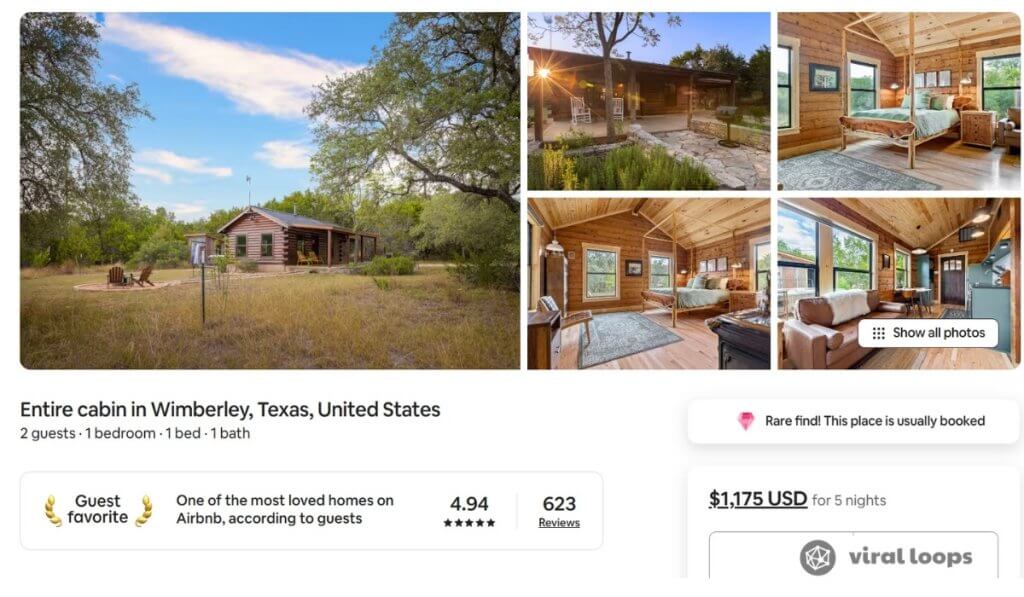
To top it off, the referral program turned existing satisfied customers into credible advocates for the platform. New users trusted friends’ recommendations more than any corporate messaging about safety or quality.
Personalization enhanced this trust factor through familiar faces in communications. Referral emails and landing pages prominently displayed the referrer’s photo and name.
This personal connection significantly increased conversion rates compared to anonymous promotional messages.
The program extended Airbnb’s reach beyond their existing user base to touch non-users effectively. Most product features only benefit current customers who already trust the platform.
Referrals uniquely bridged this gap by using trusted relationships to introduce the concept to potential customers.
User Experience Optimization
The team prioritized simplicity and convenience throughout the referral flow.
Each step was designed to minimize friction and maximize completion rates. The interface stripped away complexity to focus users on the core sharing action.
Mobile optimization proved crucial as more users accessed the platform through devices. The team created native experiences that worked seamlessly across different screen sizes and operating systems. This mobile-first approach addressed the reality that most people read emails on smartphones.
The program incorporated proper unsubscribe links and clear privacy notices in all communications.
These elements built trust with both referrers and potential new users. Respecting privacy concerns prevented the program from feeling invasive despite its social nature.
Strategic Implementation Decisions
Airbnb made several strategic decisions that differentiated their program from less successful competitors. Taking advantage of multiple platforms simultaneously created comprehensive coverage across user touchpoints. This approach prevented the platform preference gaps that plagued their first attempt.
The decision to test different messaging variants revealed surprising insights about human motivation.
Messages emphasizing “giving” travel credits outperformed those highlighting personal gain. This altruistic framing tapped into people’s natural desire to help friends rather than appear self-interested.
Providing shareable links rather than requiring email addresses expanded the program’s reach. Users could share invitations through any channel including messaging apps and social media. This flexibility allowed the program to adapt to evolving communication preferences.
Continuous Measurement and Optimization
The Airbnb team established comprehensive metrics to measure success at every funnel stage.
They tracked everything from invitation sends to final booking completions by referred users. This data-driven approach enabled targeted improvements to specific conversion points.
Regular A/B testing revealed optimization opportunities throughout the referral experience. The team tested variables including button placement, reward amounts, and message framing. Each test generated insights that incrementally improved performance over time.
Long-term analysis revealed the compounding value of referred customers over their lifetime. The team discovered that initial metrics underestimated the true value of each successful referral. This finding justified continued investment in optimizing the program over several years.
Following AirBnB’s Footsteps Using Referral Marketing Software
Today’s businesses can implement Airbnb-style referral programs without massive engineering teams or extensive coding.
Platforms like Viral Loops provide specialized tools for creating sophisticated referral systems. These solutions enable companies of any size to leverage the same growth principles that powered Airbnb’s success.
Click here to try it for free.
Here’s how Viral Loops can help you follow in AirBnB’s footssteps:
1. No-Code Implementation
Viral Loops offers a Campaign Wizard that simplifies the creation of referral programs.
Users follow guided steps to configure their program’s basic setup and customize key details. This structured approach eliminates the need for technical expertise while ensuring comprehensive program design.
The platform includes referral program templates designed specifically for different business types and objectives.
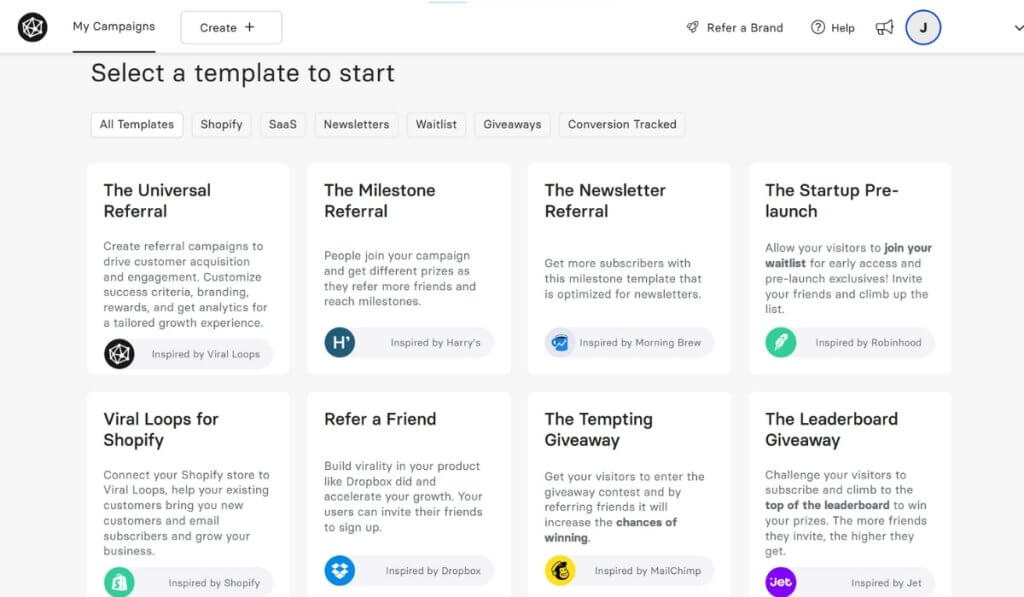
These pre-built frameworks address the unique needs of various industries and business models. Companies can select templates that align with their specific goals rather than building from scratch.
For businesses without dedicated websites, Viral Loops provides a free Landing Page Builder.
This tool enables companies to create customized campaign pages without writing a single line of code. The resulting pages can host the entire referral experience independently of existing web properties.
2. Customization and Integration Capabilities
Viral Loops supports extensive customization to match your brand identity and reward strategy.
Users can adjust visual elements, messaging, and reward structures to align with their brand. This flexibility enables the creation of unique experiences while leveraging proven program frameworks.
The platform also integrates seamlessly with popular email platforms like Mailchimp, and customer relationship management systems like Hubspot.
These connections eliminate manual data transfer between marketing tools and referral campaigns. User information flows automatically between systems for efficient campaign management.
3. Performance Tracking and Optimization
Similar to Airbnb’s approach, Viral Loops provides real-time dashboards for campaign monitoring.
These interfaces display comprehensive metrics about program performance and participant engagement. Businesses gain immediate visibility into their program’s effectiveness without complex analytics setups.
![]()
The dashboard breaks down performance by channel to reveal which sharing methods work best. This insight helps companies focus their promotion efforts on the most effective platforms.
Optimization becomes data-driven rather than based on assumptions about user behavior.
Users can also monitor both referral status and reward delivery from a single interface. This consolidated view simplifies program management and participant support.
Companies maintain complete visibility into the entire referral lifecycle from invitation to reward fulfillment.
Wrapping Up
Airbnb’s referral program journey provides a blueprint for companies seeking to fast-track growth through customer advocacy.
Their success demonstrates how a well-crafted referral program can transform existing users into powerful acquisition channels, driving both user growth and revenue expansion.
Ready to implement your own successful referral program without the extensive resources Airbnb needed?
Viral Loops enables businesses of any size to create sophisticated referral systems without coding or technical complexity. Our templates, customization tools, and performance tracking empower you to launch a program in days, not months.
Don’t leave your growth to chance when you can systematically amplify word of mouth. Build your referral program today to tap into the same mechanics that drove Airbnb’s remarkable success. Book a demo today to see how you can create a sustainable growth engine that compounds over time.
